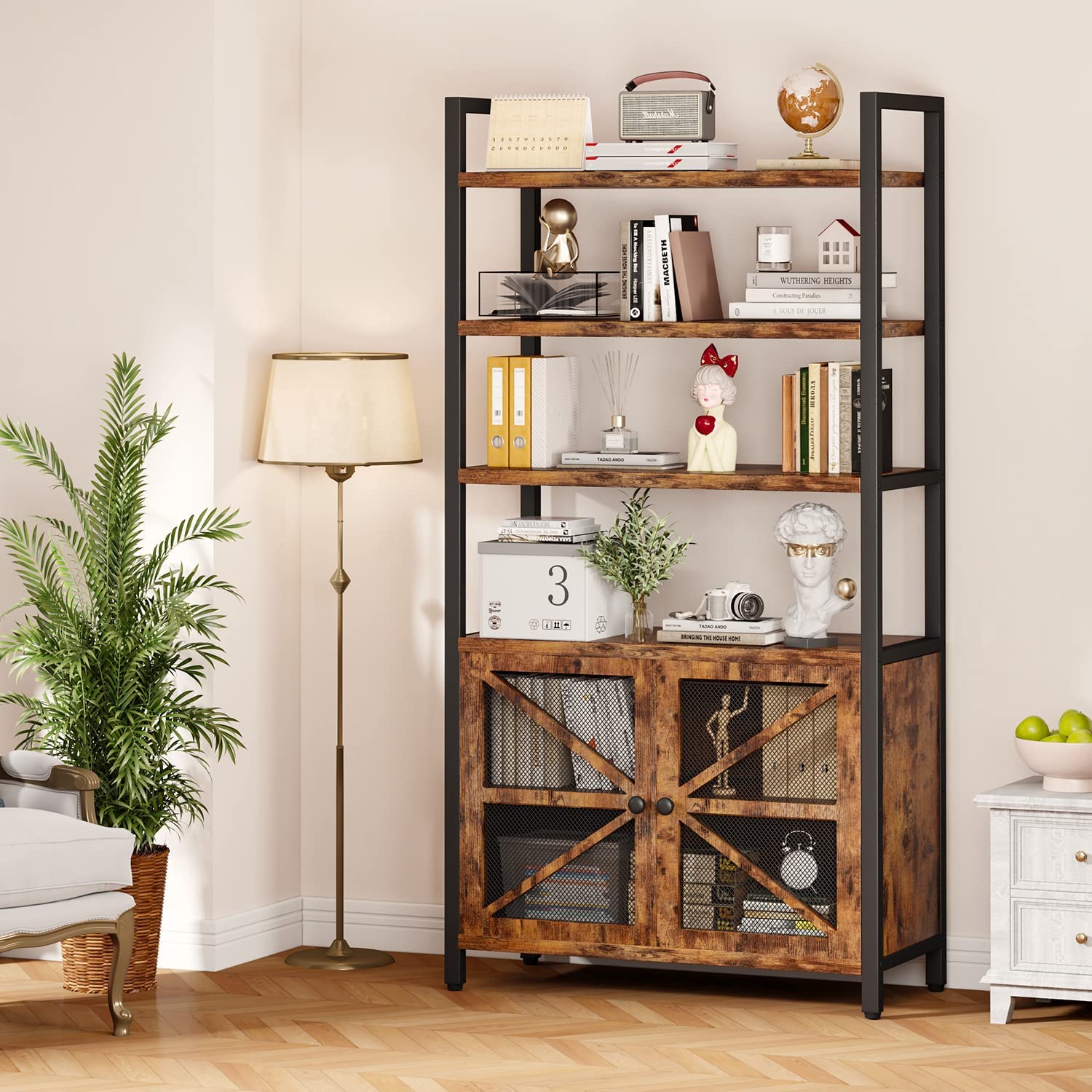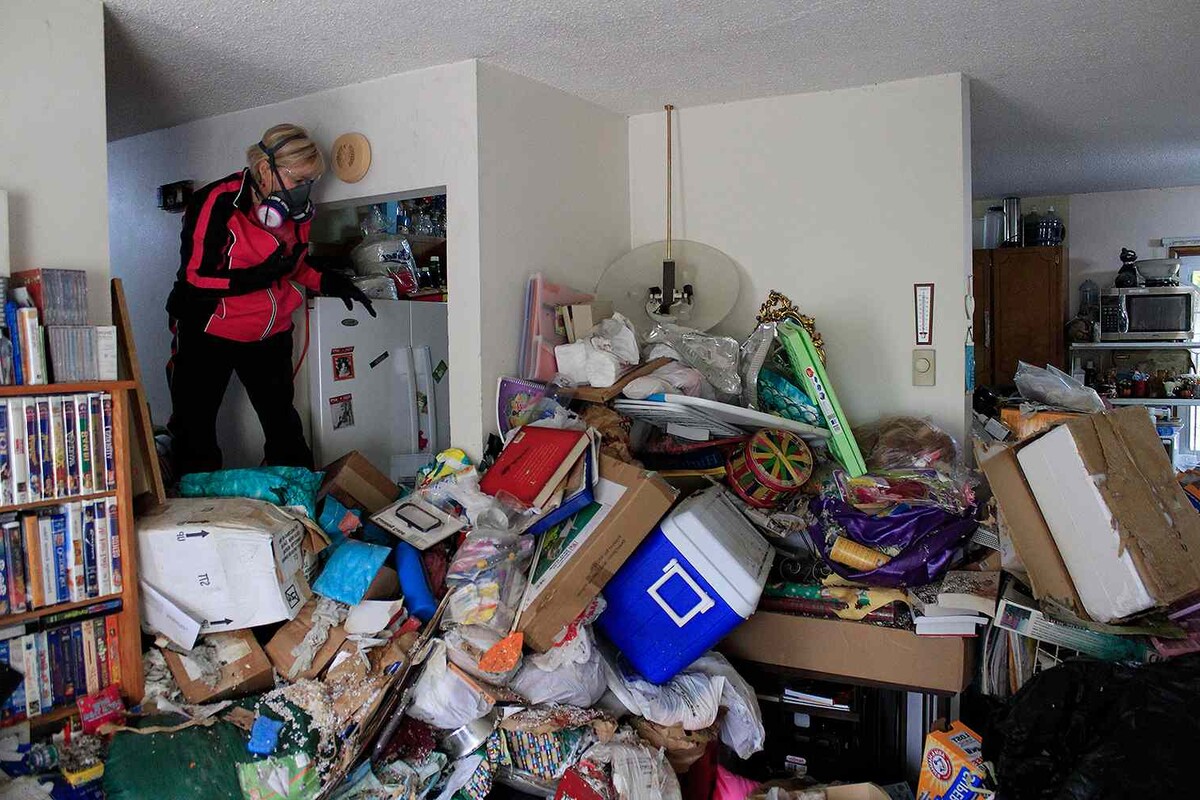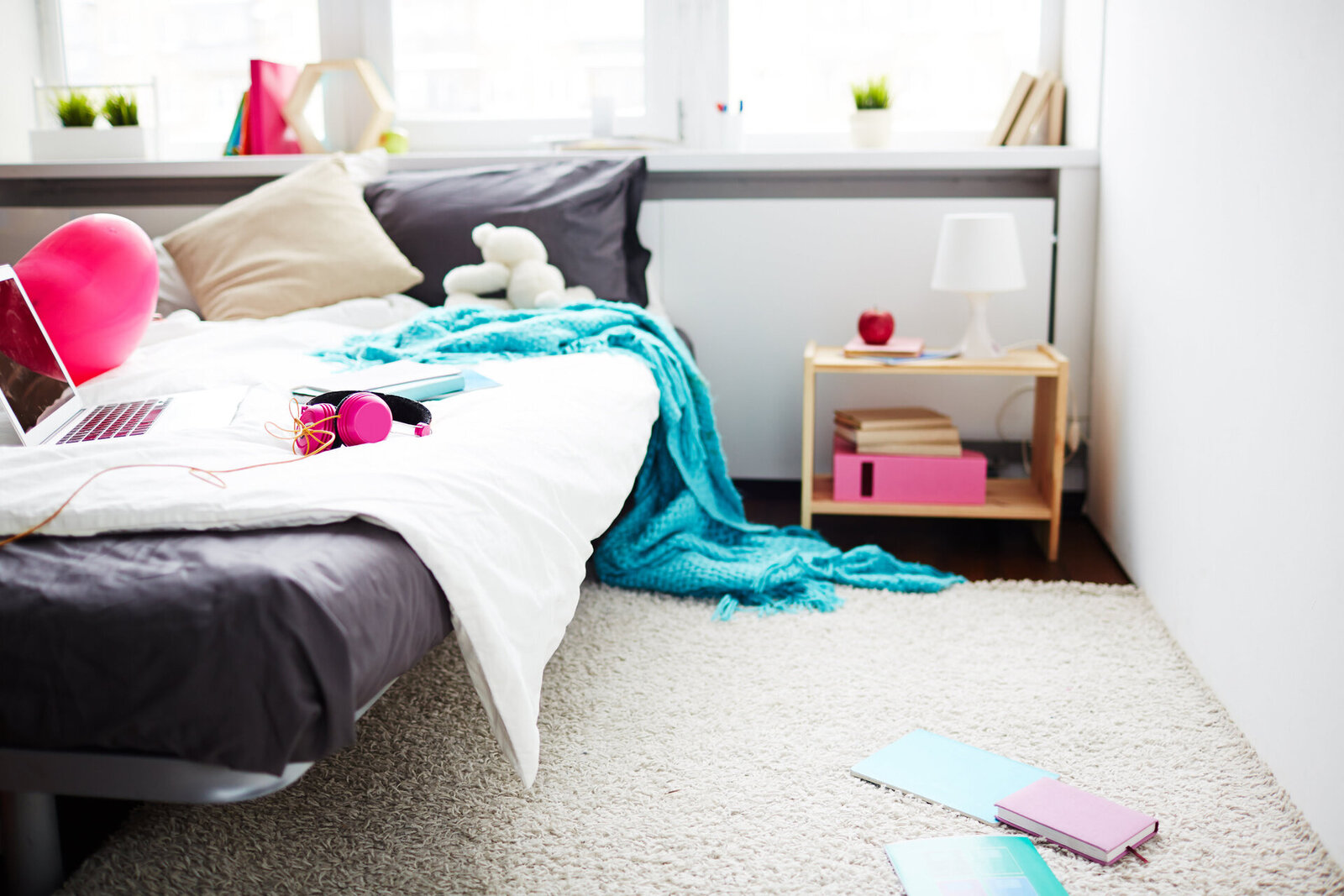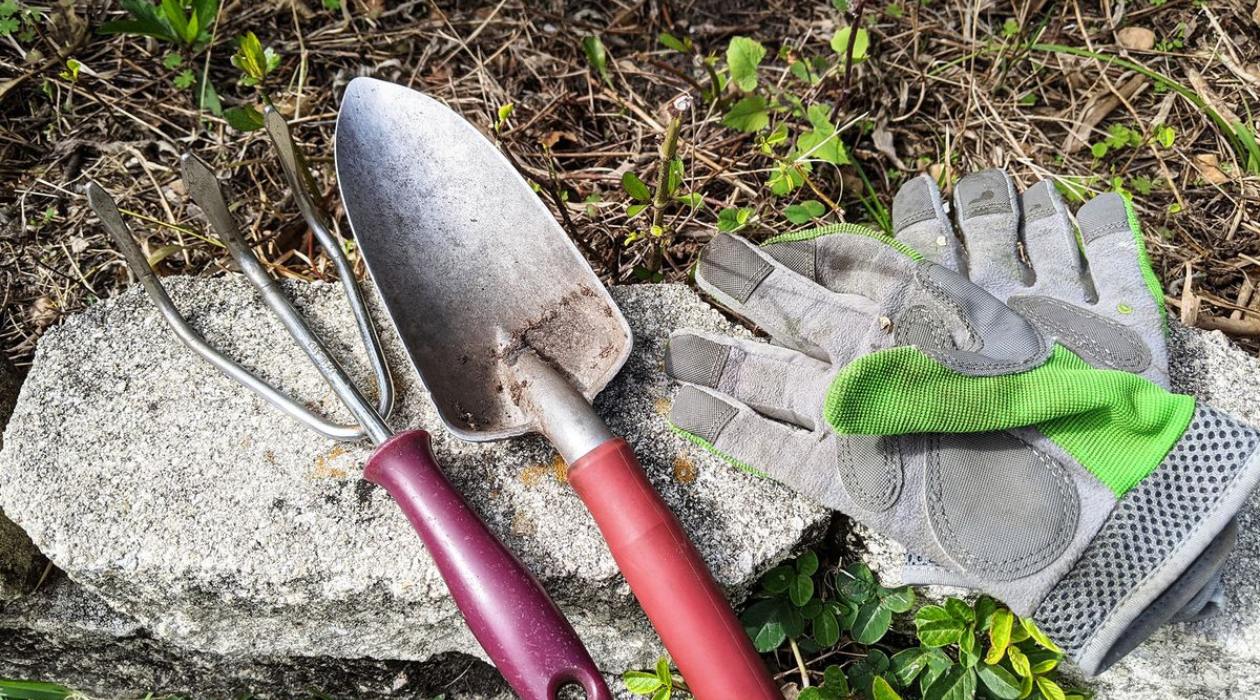

Articles
How To Start Organizing A Messy House
Modified: October 29, 2024
Learn how to start organizing a messy house with these helpful interior design tips. Transform your space into a clutter-free haven today!
(Many of the links in this article redirect to a specific reviewed product. Your purchase of these products through affiliate links helps to generate commission for Storables.com, at no extra cost. Learn more)
Introduction
Welcome to the world of organizing! If you’re staring at a messy house and feeling overwhelmed, fear not – you’re in the right place. In this article, we’ll guide you through the process of transforming your chaotic living space into a well-organized haven. Whether it’s a cluttered kitchen, a disheveled bedroom, or a chaos-filled garage, we’ve got you covered with practical tips and strategies to help you get started on the journey towards a tidier, more peaceful home.
Organizing a messy house can seem like a daunting task, but with the right approach and mindset, it’s completely achievable. The key is to break the process into smaller, manageable steps and tackle one area at a time. By doing this, you can avoid feeling overwhelmed and stay motivated throughout the process.
Before you dive in, take a moment to assess the situation. Walk through your home and identify the problem areas that are causing the most frustration. Is it the overflowing pantry, the cluttered bathroom counter, or the pile of clothes taking up valuable space in your closet? Once you’ve pinpointed the areas that need the most attention, you can begin to set specific goals for each space.
Now that you have a clear idea of what you want to achieve, it’s time to declutter. This step is crucial in creating a more organized and functional space. Start by sorting and categorizing items in the problem areas you identified earlier. Divide them into three piles: keep, donate, and discard. Be honest with yourself about what you truly need and use regularly. Letting go of items that no longer serve a purpose will not only free up space but also bring a sense of clarity and relief.
Once you’ve decluttered, it’s time to create a system that works for you. Think about the best organizational methods for each space. Do you prefer open shelves or hidden storage? Are drawer dividers essential for keeping things in order? Consider your lifestyle and habits to design a system that is practical and sustainable.
Now comes the fun part: finding the right storage solutions. From bins and baskets to shelves and hooks, there are countless options available to help you keep everything in its place. Invest in storage containers and organizers that fit your needs and make the most of your space. Don’t be afraid to get creative and think outside the box – repurposing items can sometimes be the most effective solution.
Creating routines for maintenance is key to sustaining an organized home. Develop habits that ensure everything is put back in its designated place at the end of each day. Establish a schedule for cleaning and tidying up to prevent clutter from piling up again. Remember, organization is an ongoing process, so it’s important to stay committed to maintaining the order you’ve worked so hard to achieve.
Now that you have an overview of what lies ahead, it’s time to dive into the details. In the following sections, we’ll provide room-by-room organization tips, share time management and prioritization strategies, and offer guidance on how to maintain an organized house. So roll up your sleeves, grab some storage bins, and let’s get started on transforming your messy house into a well-organized sanctuary!
Key Takeaways:
- Transform your chaotic living space into a well-organized haven by breaking the process into smaller, manageable steps and tackling one area at a time. Declutter, create a system, and maintain routines for a clutter-free and peaceful home.
- By assessing the situation, decluttering, creating a system, organizing room-by-room, managing time and priorities, and maintaining an organized house, you can transform your messy house into an organized sanctuary. Stay focused, celebrate small victories, and cultivate a sense of clarity, calm, and efficiency in your day-to-day activities.
Read more: How To Start A House Construction
Assessing the Situation
Before you dive headfirst into organizing your messy house, it’s important to first assess the situation. This step involves identifying the problem areas that are causing the most stress and setting clear goals for organization.
Start by taking a walkthrough of your home and paying attention to areas that seem particularly cluttered, disorganized, or challenging to navigate. It could be a overflowing closet, a messy kitchen pantry, or a cluttered entryway. Make note of these problem areas as they will be your main focus during the organization process.
Next, think about how you want your home to function and feel. What are your goals for organization? Maybe you want to create a calming and clutter-free bedroom, or perhaps you long for a well-organized home office that boosts your productivity. Setting goals will give you a clear vision of what you want to achieve and will help you stay motivated throughout the process.
When setting goals, it’s essential to be realistic and specific. Instead of simply saying you want a clean and organized house, break it down into smaller, achievable goals. For example, your goal for the kitchen could be to declutter the countertops, establish a system for organizing spices and pantry items, and create designated spaces for cookware and utensils.
Furthermore, consider the timeline for your organization goals. Are there any upcoming events or occasions that you’d like to have your house in order for? Setting deadlines can provide a sense of urgency and help you stay on track.
Additionally, take into account any specific challenges or limitations that may affect your organization process. If you have a small living space, you’ll need to be creative with storage solutions and make the most of every inch. If you have young children, consider their needs and create kid-friendly organization systems. By addressing these factors upfront, you can tailor your approach and ensure that your organization efforts will be effective and sustainable.
Remember, assessing the situation and setting goals is just the first step of the process. It sets the foundation for your organization journey and provides you with a roadmap to guide you along the way. Stay focused, stay positive, and keep your vision of a tidy and well-organized home in mind as you move forward.
Decluttering
When it comes to organizing a messy house, decluttering is the essential first step. It involves sorting and categorizing your belongings, making decisions about what to keep, donate, or discard, and creating a decluttering plan.
Start by choosing a specific area to declutter. It could be a room, a closet, or even a single drawer. Focus on one area at a time to prevent feeling overwhelmed.
Next, take everything out of the space you’re decluttering and begin sorting items into categories. Set up separate areas for things you want to keep, items to donate, and things that you no longer need and should discard. Be honest with yourself and ask important questions about each item:
- Do I use this regularly?
- Is it in good condition?
- Does it bring me joy or serve a purpose?
As you go through each item, make decisions about whether to keep, donate, or discard it. Be ruthless in your decluttering process and don’t hold onto things for sentimental reasons or because you might use them “one day.” Let go of items that no longer serve a purpose or bring you joy. Remember, the goal is to create a clutter-free and organized space.
Once you’ve sorted through all the items, it’s time to create a decluttering plan. Determine the order in which you’ll tackle different areas of your house. It’s often helpful to start with smaller, less overwhelming spaces to build momentum and gain confidence.
Break down larger spaces like a whole room into smaller, more manageable sections. This will make the decluttering process feel less daunting and help you stay focused. Create a timeline or schedule for each section, setting specific deadlines to keep yourself on track.
When decluttering, it can be helpful to use the “one in, one out” rule. For every new item you bring into your home, get rid of something else. This helps maintain a clutter-free environment and prevents future accumulation of unnecessary items.
Consider enlisting the help of friends or family members to make the decluttering process more efficient and enjoyable. Having a fresh pair of eyes can help you make quicker decisions and provide valuable input.
Remember, decluttering is a process, and it may take time to fully transform your messy house into an organized space. Pace yourself, celebrate small victories along the way, and stay motivated by the vision of a clutter-free and more peaceful home.
Creating a System
Once you have decluttered your messy house, it’s time to create a system that will help you maintain an organized and clutter-free space. This involves determining the best organizational methods for your specific needs, choosing storage solutions, and establishing routines for maintenance.
Start by evaluating your space and thinking about how you use it on a daily basis. Consider your lifestyle, habits, and the specific items you need to store in each area. This will help you determine the most efficient and practical organizational methods for your space.
For example, in the kitchen, you may decide to group similar items together, such as placing all baking supplies in one cabinet and storing cooking utensils in a designated drawer. In the bedroom, you might opt for using storage bins or dividers to categorize clothing items like socks, underwear, and accessories.
Choosing the right storage solutions is crucial for maintaining an organized space. There are numerous options available, from shelves and bins to baskets and hooks. Consider the size and layout of your space, as well as the items you need to store, when selecting storage containers and organizers.
Maximize vertical space by utilizing shelves or cabinets with adjustable height. This will help you make the most of your available space and keep items easily accessible. Clear bins with labels can be a great option for storing and categorizing items. They allow you to see what’s inside while keeping things neatly organized.
When establishing routines for maintenance, it’s important to make organization a part of your daily or weekly schedule. Devote a few minutes each day to tidying up and returning items to their designated places. This will prevent clutter from piling up and help you maintain the order you’ve worked hard to achieve.
Consider creating a cleaning and organizing checklist that outlines tasks to be done on a regular basis. This can help you stay on top of maintenance and ensure that no area of your home is overlooked. Delegate tasks to family members or roommates to share the responsibility and make the process more efficient.
Remember, maintaining an organized house is an ongoing process and requires commitment. Be flexible and willing to adjust your system as needed. As your needs or circumstances change, you may find that certain organizational methods or storage solutions need to be modified.
Creating a system for organization not only helps you keep your house in order but also makes daily life more efficient and enjoyable. By determining the best organizational methods, choosing suitable storage solutions, and establishing routines for maintenance, you can maintain an organized and clutter-free living space.
Room-by-Room Organization Tips
Now that you have a solid foundation for organizing your messy house, let’s dive into some room-by-room organization tips. From the kitchen to the garage, we’ll provide guidance on how to bring order and functionality to each space.
Read more: How Do I Keep My House From Getting Messy?
Kitchen Organization
In the kitchen, start by decluttering your countertops. Clear off any unnecessary items and only keep essential tools and appliances within reach. Consider installing hooks or a magnetic strip on the wall to hang frequently used utensils and knives.
Organize your pantry by grouping similar items together and using clear containers or bins to store dry goods. Use shelf dividers or organizers to maximize space and easily find what you need.
Create an efficient system for storing pots, pans, and cookware. Utilize stackable or nesting containers to save cabinet space, and consider installing a pot rack or vertical pan organizer for easy access.
Bathroom Organization
In the bathroom, declutter your countertops and keep only the essentials within reach. Use drawer dividers or organizers to keep toiletries and makeup products neatly arranged.
Maintain an organized and functional shower by using a hanging caddy to store shampoo, conditioner, and body wash. Consider installing a tension rod in the shower to hang loofahs or small baskets for additional storage.
Utilize wall-mounted or over-the-door organizers to store towels, toilet paper, and other bathroom essentials. Keep your medicine cabinet organized by grouping similar items together and discarding expired medications.
Bedroom Organization
In the bedroom, start by decluttering your nightstand and keeping only essential items within reach. Use drawer dividers or small organizers to store jewelry, accessories, or other small items.
Create designated spaces for different types of clothing, such as hanging space for dresses and suits, folded shelves for sweaters and t-shirts, and drawers for undergarments. Utilize storage bins or baskets for out-of-season clothing.
Consider using space-saving solutions like under-bed storage containers or vacuum-sealed bags to store extra linens or seasonal clothing items. Keep your closet organized by arranging clothes by category, color, or season.
Living Areas Organization
In living areas, start by decluttering surfaces like coffee tables and entertainment centers. Use decorative boxes or baskets to hide remote controls, cords, and other small items.
Maximize storage in your living room by incorporating furniture with built-in storage compartments. Use floating shelves or bookcases to display books, decorations, and collections.
Create designated zones for different activities, such as a reading corner, a media area, or a play area for children. Use storage ottomans or benches with hidden compartments to store toys, blankets, or extra pillows.
Read more: Where To Start Building A House
Home Office Organization
In your home office, declutter your desk by keeping only essential items within reach. Use desk organizers or trays to separate pens, paperclips, and other small office supplies.
Utilize wall space for storage by installing shelves or hanging organizers. Use file folders or binders to organize paperwork and important documents, and recycle or shred any unnecessary paperwork.
Create a system for organizing cables and cords with cable management tools or cord clips. Consider using a bulletin board or whiteboard to keep track of important dates, to-do lists, or inspirational quotes.
Garage or Storage Area Organization
In the garage or storage area, start by decluttering and sorting items into categories like tools, sports equipment, holiday decorations, and gardening supplies. Donate or discard any items that you no longer need or use.
Utilize wall space by installing hooks or pegboards to hang tools and equipment. Use storage bins or clear containers to store smaller items and label them for easy identification.
Consider using ceiling-mounted racks or overhead storage solutions to store bulky or seasonal items. Create designated zones for different categories of items to keep everything organized and easily accessible.
By applying these organization tips to each room of your house, you can transform your messy dwelling into a well-organized and functional home. Remember to declutter, establish systems, and maximize storage to create a space that suits your needs and promotes a sense of calm and order.
Time Management and Prioritization
When it comes to organizing a messy house, effective time management and prioritization are key. Creating a schedule for organizing tasks, breaking down large projects into manageable steps, and setting priorities will help you stay on track and make the most of your time and energy.
Creating a Schedule for Organizing Tasks
Start by creating a schedule or calendar specifically dedicated to your organizing efforts. Set aside specific blocks of time for organizing tasks, whether it’s a few hours every weekend or smaller increments throughout the week. Having a dedicated schedule will help you stay focused and committed to your organization goals.
Be realistic when setting your schedule. Consider your other commitments and responsibilities, as well as your available energy levels. Don’t overload your schedule, as this can lead to burnout and frustration. Allow for flexibility and adjust the schedule as needed.
Read more: How To Start A Wine Collection At Home
Breaking Down Large Projects into Manageable Steps
Large organization projects can seem overwhelming, so it’s important to break them down into smaller, more manageable steps. Consider each room or area of your house as a separate project and tackle them one at a time.
For example, if you’re organizing your kitchen, you can divide the project into subtasks such as decluttering the pantry, organizing the cabinets, and creating a system for the refrigerator. Breaking down the tasks will not only make them more manageable but also provide a sense of accomplishment as you complete each step.
Set realistic goals for each step and prioritize them based on what is most critical or what will have the biggest impact on your daily life. This will help you stay focused and accomplish tasks in a systematic and efficient manner.
Setting Priorities
Setting priorities is essential when organizing a messy house. Not all tasks are created equal, so it’s important to determine what needs to be done first and what can be addressed later. Assess the urgency and importance of each task to establish a clear order of priority.
Consider the impact that completing a task will have on your day-to-day life. Is there an area that causes the most stress or hinders your functionality the most? Start with those spaces that will bring the most immediate and significant improvement to your living situation.
Additionally, prioritize tasks based on your personal preferences and organizational goals. If you find that a particular area or project is a top priority for you, allocate more time and energy to focus on it first.
Remember to be flexible with your priorities. As you progress through your organization journey, priorities may shift or new needs may arise. Stay adaptable and willing to adjust your plans to address changing circumstances.
By implementing effective time management techniques, breaking down tasks, and setting priorities, you can make steady progress towards an organized and clutter-free home. Stay committed to your schedule, celebrate milestones along the way, and enjoy the sense of accomplishment as you transform your messy house into an organized sanctuary.
Maintaining an Organized House
Congratulations on organizing your messy house! Now comes the equally important task of maintaining that organization. By establishing regular cleaning and tidying routines, implementing strategies to prevent clutter buildup, and scheduling periodic decluttering and reorganizing sessions, you can ensure that your home stays organized and clutter-free in the long run.
Regular Cleaning and Tidying Routines
Make cleaning and tidying up a part of your daily or weekly routine. Devote a few minutes each day to quickly tidy up and return items to their designated places. This will prevent clutter from accumulating and help you maintain the order you’ve worked so hard to achieve.
Establish a schedule for regular cleaning tasks such as dusting, sweeping, mopping, and vacuuming. Create a checklist or a cleaning calendar to keep track of what needs to be done and when. Assign specific tasks to different days or family members to share the responsibility.
Break down larger cleaning tasks into smaller, more manageable steps. For example, instead of trying to clean the entire kitchen in one go, focus on cleaning one area at a time, such as the countertops or the refrigerator. This will make the process feel less overwhelming and more achievable.
Read more: Where To Start Building A Tiny House
Strategies for Preventing Clutter Buildup
Implement strategies to prevent clutter from piling up again in your organized house. Here are a few helpful tips:
- Practice the “one in, one out” rule: For every new item you bring into your home, get rid of something else. This will help maintain a balance and prevent unnecessary accumulation.
- Create designated spaces for everything: Every item should have a specific place where it belongs. Encourage everyone in your household to put items back in their designated spots after use.
- Implement a paper management system: Paper clutter can quickly accumulate. Establish a system for dealing with mail, bills, and paperwork. File important documents, shred unnecessary papers, and keep a recycling bin nearby for quick disposal.
- Regularly purge and reassess belongings: Set aside time periodically to reevaluate your belongings and assess whether any items are no longer needed or useful. If so, donate or discard them.
Periodic Decluttering and Reorganizing
In addition to regular cleaning and tidying, schedule periodic decluttering and reorganizing sessions to maintain your organized house. Set aside dedicated time, whether it’s once a month or every few months, to assess your belongings and make necessary adjustments.
During these sessions, reevaluate your organizational systems and storage solutions. Are they still meeting your needs effectively? Are there any areas that have become disorganized or cluttered? Use this time to make any necessary changes or upgrades to your systems.
Take the opportunity to declutter areas that may have started accumulating items over time. Use the same sorting and decision-making process as when you initially decluttered your house. Be ruthless and let go of anything that is no longer needed or bringing value to your life.
Remember, maintaining an organized house is an ongoing process. It requires commitment and consistency. By incorporating regular cleaning and tidying routines, implementing strategies to prevent clutter buildup, and scheduling periodic decluttering and reorganizing sessions, you can ensure that your organized house remains a sanctuary of peace and order.
Conclusion
Congratulations on taking the first steps towards transforming your messy house into an organized sanctuary! By following the tips and strategies outlined in this article, you’ve learned how to assess the situation, declutter, create a system, organize room-by-room, manage your time, and maintain an organized house.
Remember that organization is an ongoing process and requires commitment and consistency. It’s not a one-time task but rather a lifestyle that promotes peace, functionality, and a sense of well-being within your home.
As you embark on your organization journey, keep these key takeaways in mind:
- Assess the situation: Identify problem areas and set clear goals for each space in your house.
- Declutter: Sort and categorize items, making decisions about what to keep, donate, or discard, and create a decluttering plan.
- Create a system: Determine the best organizational methods for your specific needs, choose suitable storage solutions, and establish maintenance routines.
- Organize room-by-room: Apply specific strategies to organize key areas such as the kitchen, bathroom, bedroom, living areas, home office, and garage or storage areas.
- Manage time and priorities: Create a schedule for organizing tasks, break down large projects, and set priorities to make the most of your time and energy.
- Maintain an organized house: Establish regular cleaning and tidying routines, implement strategies to prevent clutter buildup, and schedule periodic decluttering and reorganizing sessions.
By incorporating these practices into your daily life, you’ll not only create a physically organized space, but you’ll also cultivate a sense of clarity, calm, and efficiency in your day-to-day activities.
Finally, remember that organization is personal and unique to you and your household. Adapt the strategies and tips to fit your specific needs and preferences. Experiment with different methods until you find what works best for you.
So, don’t be discouraged if you encounter setbacks along the way. Keep going, stay focused, and celebrate every small victory. With persistence and a positive mindset, you’ll achieve and maintain an organized house that brings you peace, joy, and a more balanced lifestyle.
Frequently Asked Questions about How To Start Organizing A Messy House
Was this page helpful?
At Storables.com, we guarantee accurate and reliable information. Our content, validated by Expert Board Contributors, is crafted following stringent Editorial Policies. We're committed to providing you with well-researched, expert-backed insights for all your informational needs.












0 thoughts on “How To Start Organizing A Messy House”